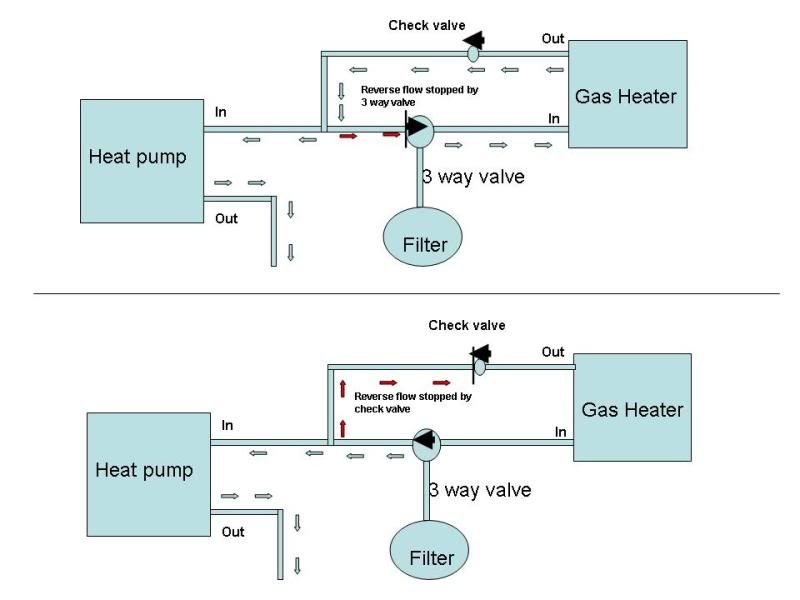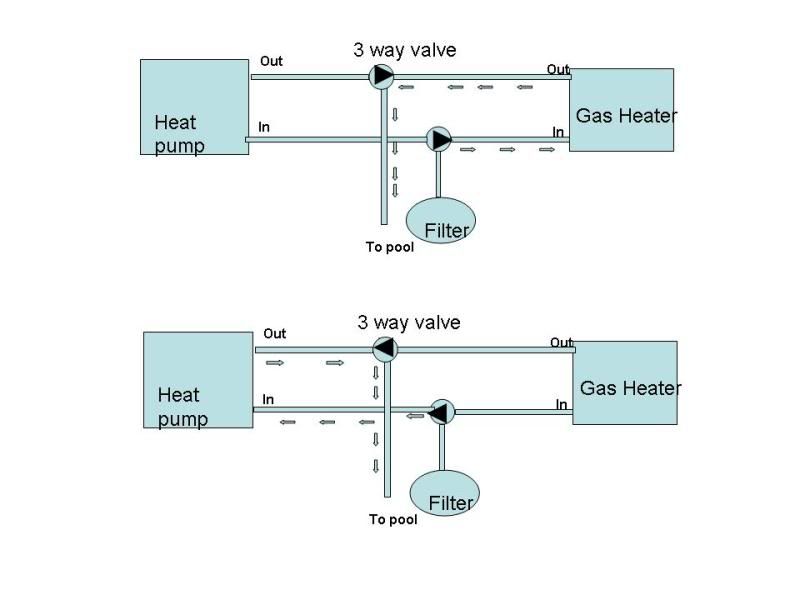After having a heat pump for 3 seasons in massachusetts, I've come to the conclusion (actually mostly my wife's conclusion  ) that I need a gas heater as well. The heat pump works great late May thru the end of August. However, early spring and September/mid October, it just does not cut it. So, this spring I'm going to add a LP heater and need sme feedback from some of you construction guru's on the best way to plumb this up. As an aside, I plan NOT to use the heat pump when I use the LP. IOW, when the LP is on, the heat pump will be shut off, and vise versa.
) that I need a gas heater as well. The heat pump works great late May thru the end of August. However, early spring and September/mid October, it just does not cut it. So, this spring I'm going to add a LP heater and need sme feedback from some of you construction guru's on the best way to plumb this up. As an aside, I plan NOT to use the heat pump when I use the LP. IOW, when the LP is on, the heat pump will be shut off, and vise versa.
Below are 2 different ways I have thought of to plumb two heaters together. The first 2 diagrams use one 3 way and one check valve (I've actully seen this before when solar is used in conjunction with a heater. The second 2 diagrams use two 3 ways and bypasses one heater all together. Keep in mind the heat pump will be off when the LP is running.
What say ye?


Below are 2 different ways I have thought of to plumb two heaters together. The first 2 diagrams use one 3 way and one check valve (I've actully seen this before when solar is used in conjunction with a heater. The second 2 diagrams use two 3 ways and bypasses one heater all together. Keep in mind the heat pump will be off when the LP is running.
What say ye?




 ]
] **)
**)